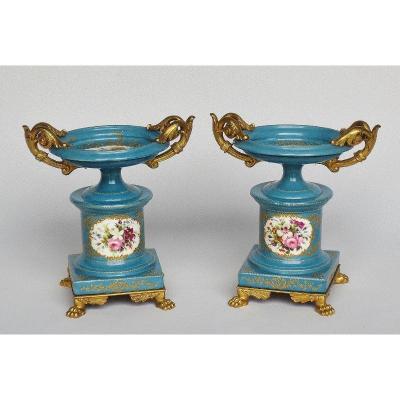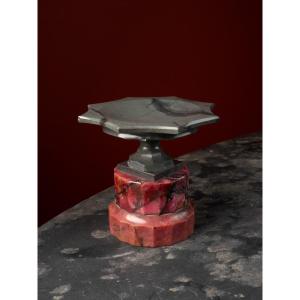Russia.
ca. 1830.
h. 3,75 in. ; d. 4,13 in.
This finely cut, faceted and polished Kalgan jasper tazza rests on a double base of rhodonite, or orletz, a colour combination typical of Russian lapidary works of the 19th century.
It was probably the craftsmen in the Ekaterinburg workshops who fashioned this colourful tazza. Carrying jasper blocks across Russia being extremely difficult and costly, lapidary workshops were founded in 1765 as close as possible to the Urals, in Yekaterinburg, closer, at least, to the mines and quarries where the Kalgan jasper was extracted, which had previously been transported from the Urals to the Peterhof workshops on the outskirts of Saint Petersburg, that is, from Asia to Europe.
Many vases and bowls cut from Kalgan jasper were shown in ceremonial rooms of the Russian palaces of the Empire, some of which can now be seen in the Hermitage Museum in St Petersburg.
Sources
Alexandra Chouvalov, Antoine Nivière and Alexis Kugel, Trésors des Tzars. La Russie & l'Europe de Pierre le Grand à Nicolas Ier, Paris, 1998.






















 Le Magazine de PROANTIC
Le Magazine de PROANTIC TRÉSORS Magazine
TRÉSORS Magazine Rivista Artiquariato
Rivista Artiquariato
